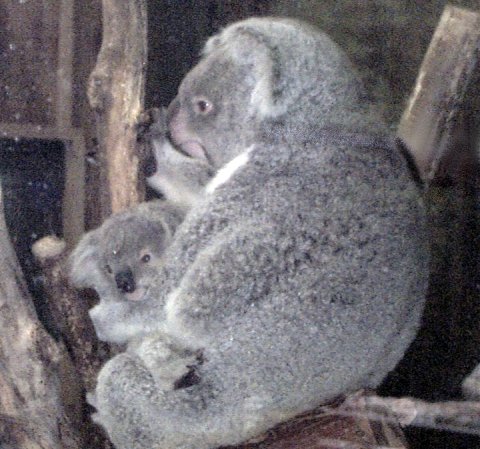Koala
|
.
Reproduction and Growth The Koala breeds 1 to 2 times per year. The gestation period is about 35 days and the usual litter size is 1 joey, but twins have been reported. At birth the Koala weighs 5.7 grams and is about the size of a thumbnail. The Koalas are "pouched" mammals. At birth the young find their way to the pouch and remain there for up to 7 months. The Koala reaches sexual maturity at the age 4. At maturity the Koalas are about 29.5 inches long and weigh about 20 pounds. Koalas can survive as long as 20 years. Although the Koalas are marsupials, they are often mistaken for bears.General Information
Habitat
Disease Although not the greatest threat, Chlamydia, a sexually transmitted bacteria, places strain on the Koala community. There are several strains that cause problems. Chlamydia pecorum and Chlamydia pneumoniae are two that are known to affect Koalas. Chlamydia psitacci is also said to cause problems for these furry animals. This strain can cause blindness, infertility, and other complications that can be fatal. Koalas under the stress of urbanization have widespread, serious problems. Climate Queensland has one of the warmer
climates in Australia. The Queensland Koalas have less fur than
other Koalas. This adaptation helps them to survive in the heat.
Personal Observation When I visited the Fort Worth
Zoo, I immediately fell in love with these furry creatures. The
koalas were very laid back and content. They seldom stirred from
their nap. They slept in a curled fetal position on the branch of
the tree. They were very easygoing, and did not mind all of the
attention they were attracting. |

 Information
placard at the Fort Worth Zoo
Information
placard at the Fort Worth Zoo